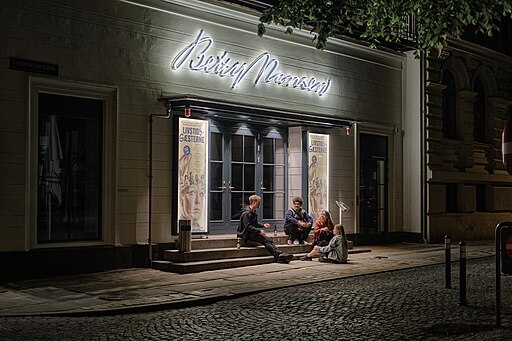
When you think about where you spend most of your time, places like home, work, and school are probably the first to come to mind – but where do you go just to have fun?
The term “third space” was coined by sociologist Ray Oldenburg, meaning anywhere someone spends time between home and work. Home is considered the first space, and work or school the second. A third space, by definition, should be low-cost, low-effort, accessible, and specifically designed for people to hang out in and have a good time. However, places that were once considered third spaces have slowly become less and less accessible, especially to teenagers.
During and after the pandemic, social media is increasingly becoming teens’ main outlet for socialization. The resulting loneliness from minimized real social interaction has been blamed on technology by adults who say that if teenagers just had a real conversation and left the house, mental health would improve. However, the truth is that social media has become the norm due to the inaccessibility of other, in-person spaces.
Someone could say that their third place is the mall, the gym, a restaurant, or their car – but the reality is that all of those options require unnecessary spending, and most teens do not have disposable money to spend on leisure. Working at a minimum wage job isn’t legal until someone is 15 or 16 years old, and even then, many teenagers do not get jobs or don’t make enough money to spend significant amounts for fun. Shopping, paying for a gym membership or gas, and buying unnecessary food are not always viable options for recreation – but they have slowly become the norm for leisure activities.
There is also the issue of distance. The number of teenagers with driver’s licenses has steadily declined in the past few years, and many rely on parents or friends for transportation. This means that the location for a third space has to be relatively close to residential areas. However, as car-centric urbanization increases and suburbs expand outwards, non-residential areas are pushed further and further away.
In the past, a neighborhood was surrounded by popular places to go – stores, malls, arcades, restaurants, parks, and recreation centers – all of which were significantly cheaper than they are now. But now, large swathes of suburbs are mostly fringed by shopping malls and other places to spend a lot of money in very little time. This, in combination with a decrease in public transportation like buses and trains in suburban areas, makes it difficult for teenagers to reach leisure spaces without being reliant on outside factors.
Curfews and limitations placed on teens in public areas also limit going to third spaces. Signs that say things like “No one under the age of 18,” “All minors must have 18+ supervision,” and other purposefully exclusionary phrases are seen more and more in what used to be publicly accessible spaces.
While they are sometimes for the safety of the establishment, there are other solutions to security concerns caused by teens – things like increasing security will also benefit the establishment without closing locations to the entire population that needs them to protect from a minority.
As more and more people work from home, the lines between first and second spaces are increasingly blurred, and using social media as a third space eliminates socializing in a physical environment. Third spaces facilitate interaction, recreation, and leisure. They are incredibly important for mental health and well-being, and city planners should take them into greater consideration when mapping out neighborhoods and public areas.
A third space is most effective when in-person, but they are becoming increasingly virtual. However, there are some places available to most people that should be utilized instead of technology. Public parks, available in most neighborhoods, libraries, and coffee shops are usually in close proximity to residential areas and relatively cheap or free to use. Taking advantage of these places is beneficial to everyone, and while we continue to hope for more accessible third spaces in the future, there are good alternatives to use.








